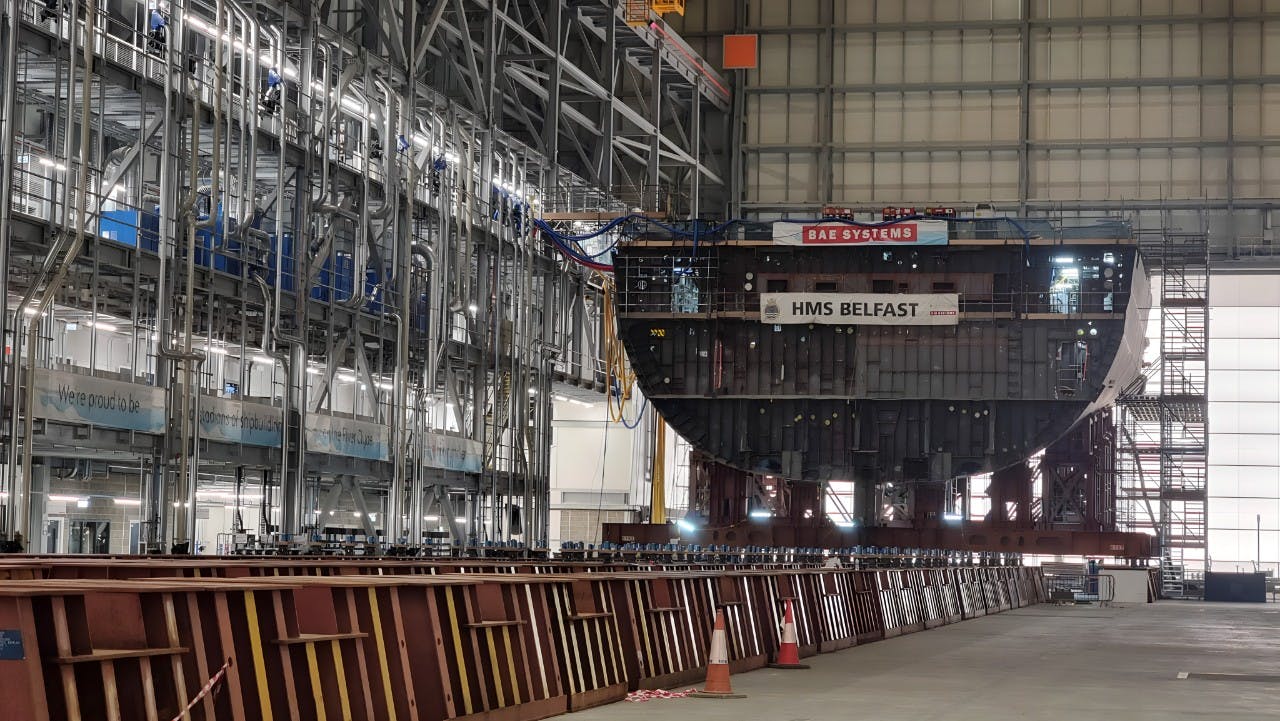Labour peer Lord West of Spithead asked whether two build streams would be established to ensure delivery schedules for both navies are met.
Responding on 16 September, Defence Minister Lord Coaker said: “The recent announcement by the Norwegian Government to select the UK as a strategic partner for the acquisition of Type (T26) warships is expected to provide a £10 billion boost to the UK economy and support more than 400 British companies.”
He added: “Both the Royal Navy and Norwegian Navy T26 frigates will be built simultaneously by BAE Systems on the Clyde, benefitting from investments already made, such as the Janet Harvey Shipbuilding Hall in Govan. The new Shipbuilding Hall will improve schedule performance and the pace of delivery, reducing the time between future ship deliveries for both the UK and Norway.”
The Type 26, also known as the City-class frigate, is being built for the Royal Navy to replace the ageing Type 23s. Its export success with Australia and Canada had already established it as a significant international programme before Norway became the latest customer. According to the government, the dual build will take advantage of recent shipyard modernisation in Glasgow, which is designed to accelerate throughput and deliver multiple ships at pace.
BAE open huge new shipbuilding facility in Glasgow
Inside a conference room in a building overlooking the Janet Harvey Hall on Glasgow’s River Clyde, Sir Simon Lister recently laid out a clear ambition for British warship production: pace, precision, and purpose.
The new shipbuilding facility, one of the largest covered yards in Europe, is central to a transformation that aims to deliver Royal Navy frigates faster than ever before.
Lister, Managing Director of BAE Systems Naval Ships, described a future where warships are not just built, but engineered as “nodes in a network of military capability.”
Speaking at a media briefing, he explained, “The word I never really understood when I was the customer of this organisation was ‘integrating.’ Integrating complex things—like the programme, like the technology—that’s what BAE Systems does. We take the customer’s requirements, which are really quite sophisticated in terms of lethality and stealth, and we translate those requirements into metal, into nuts and bolts, into a computer system.”
He emphasised that while many associate warship construction with steel, the true complexity lies elsewhere. “People tend to focus on the steelwork. Actually, that’s a small part of what we do. It’s the spectacular part, but that ship really takes a supercomputer to sea.”
Cutting build time by a third
Inside the new hall, shipbuilders are working to compress the build time of the Type 26 frigates significantly. “We’re aiming to build the fourth Type 26 in 66 months,” said Lister. “From ship one to ship four we aim to improve the performance of the yard by 30 percent.”
That’s a substantial leap forward from the first-in-class, HMS Glasgow. “We’re moving from building a prototype—HMS Glasgow—and the prototype is always a giant. No surprise there. But we’re now moving into series production of a ship that we are confident we can produce one every year,” he said.
According to Lister, weatherproofing alone has transformed the productivity. “We’re taking a third out of the time to build the ship. The quality and efficiency with which we build will be so much greater because we’re building it in the dry.”
This leap in capability is made possible by a digital overhaul of the yard itself. “What we’ve done is take the shipyard digital,” said Lister. Workers now use ruggedised laptops on the shop floor instead of paper drawings. “We wanted to communicate the design of the ship digitally. It’s one thing for the designers to have this model—but now everyone on the shop floor has access to it.”
The transformation extends from fabrication to fit-out. “We’ve modernised the panel line at a cost of just shy of £20 million. It produces panels at twice the rate of the original manual line. Our operators are much safer. Welding is intrinsically dangerous—we’ve removed the person from the hazard as much as we possibly can.”
BAE Systems expects to deliver Type 26 frigates annually by the time Ship 5 enters production. “That’s the objective,” said Lister. “The ambition in all of this is to build a warship every year—and to build them well.”
For now, BAE’s focus remains on keeping pace. “The Navy wants us to build these ships as quickly as we can. That’s the cheapest way to build the ship: in the right order, at the highest pace you can safely achieve—maintaining quality all the time.”
